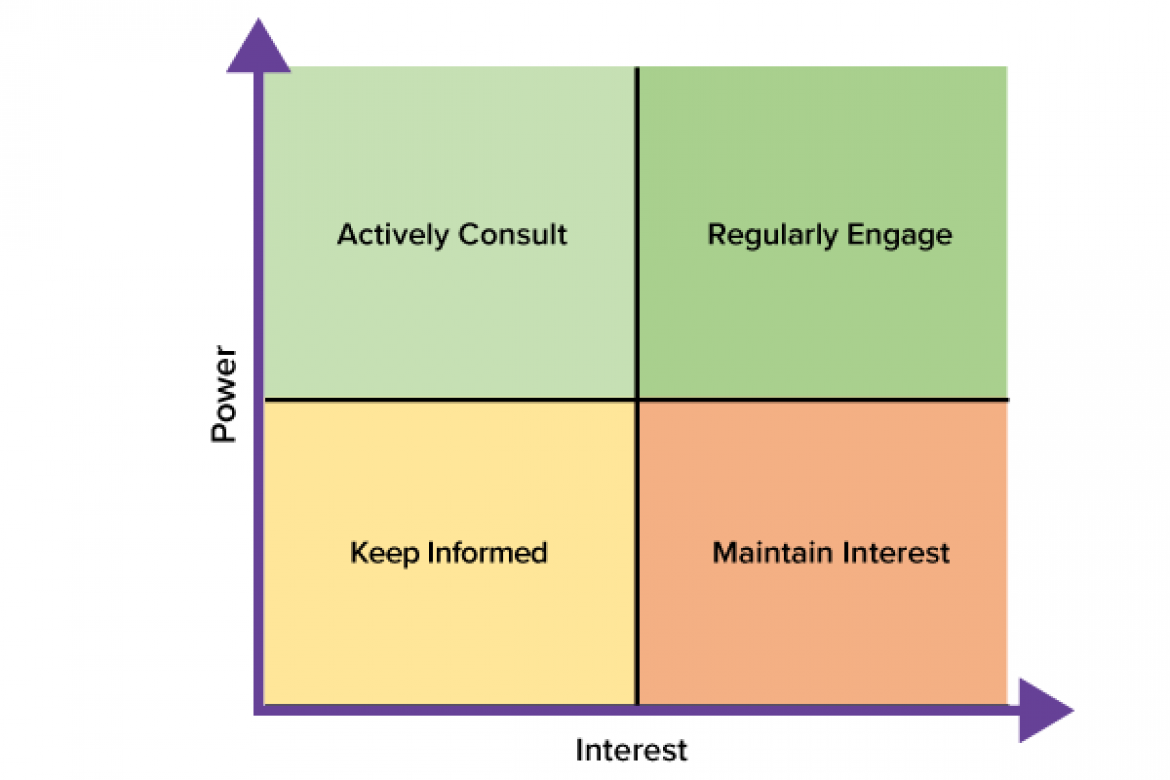The power/interest grid is a matrix used for categorising stakeholders during a change project to allow them to be effectively managed. Stakeholders are plotted on the grid in relation to the power and interest they have in respect of the project. The grid categorises stakeholders into the following four groups:
- High power/high interest
- High power/low interest
- Low power/high interest
- Low power/low interest
What is a power-interest grid?
A power-interest grid is a technique used to categorise stakeholders based on their power or influence and interest in a project. Before using the technique, you should identify all stakeholders involved in the project. You can identify stakeholders by looking at existing documentation, holding workshops, creating ‘as is’ business process maps and generally talking to people within the business.
Why use a power-interest grid?
Categorising stakeholders in this way can allow you to develop strategies to manage all stakeholders effectively. You may use your categorisation to create a stakeholder communication plan. Stakeholders with high power and high interest will want to be engaged with regularly, whereas stakeholders with low power and low interest do not require regular and detailed communication (however, this does not necessarily mean that they should be ignored!).
How do you use a power-interest grid?
You should create a grid or use a template. It is important to place the stakeholder where they actually are and not where they (or you) would like them to be. Once you have placed the stakeholder within the grid, you can look at which category they fall under and manage the stakeholder accordingly.
The complexity of the project will determine the detail to which you fill in the grid. For example, you might want to use more than the four positions shown below. For many projects, however, it is sufficient to consider the four categories below: Keep Informed, Maintain Interest, Actively Consult and Regularly Engage.

- The power/interest grid has an x axis for interest and y axis for power.
- The grid is split into four quadrants, the bottom left is keep informed; the top left is actively consult; top right is actively engage; and bottom right is maintain interest.
What happens next?
After using the power-interest grid, you can then progress onto developing appropriate stakeholder management strategies. You can also use the RASCI acronym (Responsible, Accountable, Support, Consult and Inform) to define each stakeholder’s involvement in the project which can also help effectively manage the project.